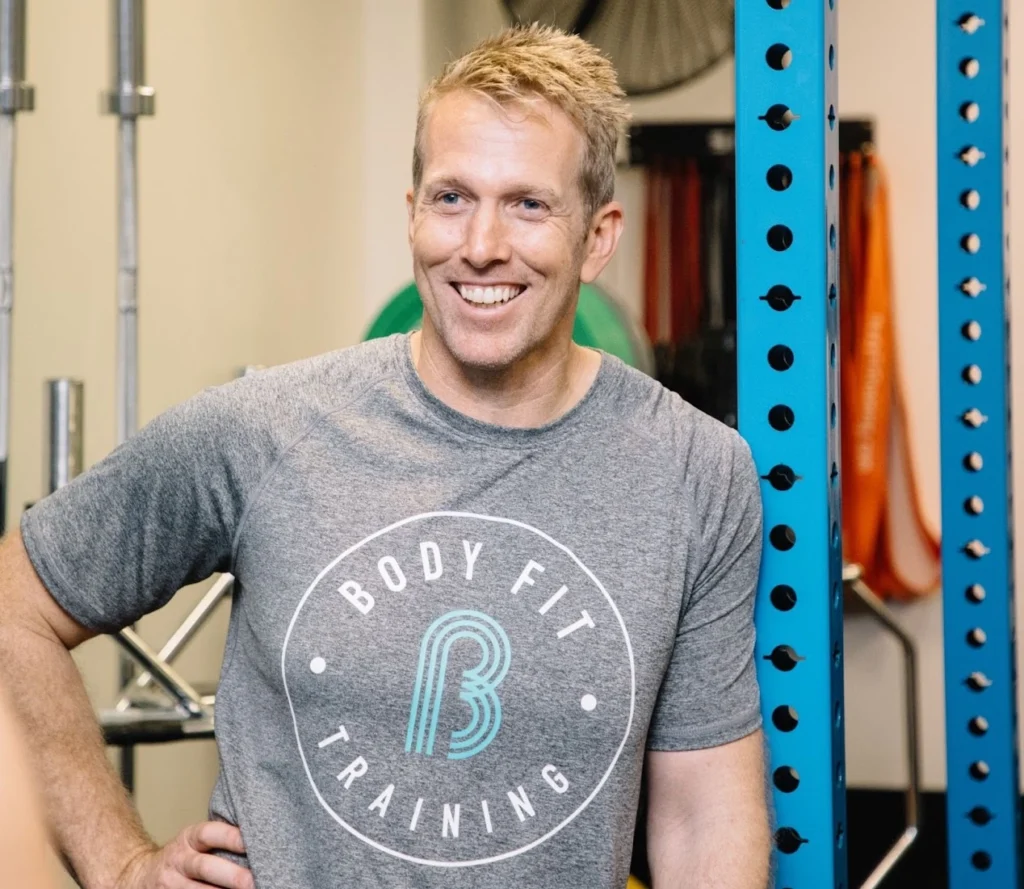Featured on Franchise Corner
View More
How BFT Built a Global Strength Training Power

Founded in 2017, BFT takes a sports-science approach to group fitness. The brand has already opened 290 studios and is just getting started
Boutique fitness is more popular than ever, but the industry has at times been criticized for relying on fads and flash more than sustainable, effective workout routines.
No one can level that line of criticism against Body Fit Training (BFT), the fast-growing boutique fitness franchise established in Melbourne, Australia, by Cameron Falloon, a decorated strength and conditioning coach who once served as Princess Diana’s personal trainer.
Inspired by his time training professional athletes in the Australian Football League (AFL), Falloon created BFT in 2017 to bring strength and conditioning principles like progression, periodization and program design to the world of group fitness. The idea behind BFT, Falloon says, was to give everyday people access to the same elite-level strength and conditioning tools as AFL athletes, scaled for ability level and time constraints.
“I found that there was a lot of sameness in the (boutique fitness) industry, and I didn’t see a lot of consideration around periodization or progression or really spending time on things like exercise selection for different individuals, like you would with an elite athlete,” Falloon tells Athletech News of market research he did before launching BFT. “How could I bring (my) knowledge and experience and make that accessible to the mainstream?”

Falloon was onto something. BFT has quickly spread across the globe with 290-plus studios open and 720-plus franchise licenses sold across several continents. Boutique fitness franchisor Xponential Fitness acquired BFT in late 2021 and has begun rapidly expanding the brand in the United States, having already sold almost 300 licenses in North America.
A lot of planning, technology and time has gone into making BFT workouts effective, scalable and engaging for members. But at the end of the day, Falloon believes the concept’s popularity is rooted in its focus on results above all else.
“We get too caught up in trends as an industry, versus delivering the basic fundamentals at a really high level,” he says. “I think once you get that right, then you can start to explore and maybe get a little bit more experimental.”
Inside a BFT Workout
BFT workouts are modeled after the strength and conditioning programs Falloon devised for AFL clubs like Geelong, Port Adelaide and the Western Bulldogs, but scaled to be safe and accessible for everyday people.
Currently, BFT offers 14 different strength and conditioning classes, each of which lasts 50 minutes and is scientifically designed to help members burn fat and build muscle while getting a full-body workout. Classes are performed in groups of around 36 people and include some combination of compound weightlifting exercises like deadlifts, bench presses and kettlebell swings, bodyweight movements like box jumps and pull-ups, and cardio work including running, cycling and rowing. The specific mix of exercises depends on class type.

Importantly, every BFT class is structured around an eight-week cycle, which allows members to measure their progress over time, just as pro athletes would during their training. Programming for each eight-week training block is carefully devised by BFT at the corporate level, and standardized programs are sent to every BFT franchise owner across the globe.
This ensures consistency, although Falloon says BFT empowers its coaches to modify or substitute certain movements to tailor the workout to the ability levels of individual class members.
“If a member has poor range of movement in their shoulder or they’ve got some shoulder impingement, we’re not going to force them to do a military press like everyone else is doing in the class,” he explains. “We give (coaches) the tools to be able to scale that to the individual.”
Gamification Meets Strength Training
A highly calculated approach to program design isn’t the only thing that sets BFT apart from its competitors in the boutique fitness space. The strength and conditioning franchise is highly innovative in the way it uses heart-rate-tracking tech to gamify workouts, including strength training.
Looking to drive member engagement, Falloon and his team created BFT3, a proprietary heart-rate tracking system that rewards members who get their heart rates to within specifically prescribed zones based on that day’s workout type.
“There’s a lot of fantastic heart-rate products out there, but the gamification side of it is really lacking because they’re only ever rewarding a higher heart rate,” Falloon explains, noting that for strength-training exercises like a deadlift, the goal isn’t to get your heart beating as fast as possible, but to get to within a certain range that’s deemed optimal for the amount of weight lifted and reps being performed.
“We’ve actually been able to use heart rate to gamify strength training, which is a world-first,” Falloon says.
During class, BFT members can see their heart rates displayed on-screen. Once class finishes, a leaderboard is displayed and members are rewarded with Gold, Silver or Bronze medals based on how close they got their heart rate to the target zone.
“It’s an instantaneous reward that creates community and a talking point,” Falloon says of BFT3 and the leaderboard approach. “You see people as soon as they finish a session, they’re high-fiving, staring at the screen waiting to see if they’ve got their gold medal.”
BFT also bakes other gamification features into its app to drive long-term engagement. For example, members earn status levels for in-class achievements, starting out as a rookie and progressing all the way to immortality, a journey that takes around six years to complete.
The gamification features seem to be successful at driving member engagement. On average, BFT members attend class four to five times a week, which is significantly higher than the average for the boutique fitness industry, which hovers around two to three visits a week.

Global Expansion Plans
Falloon tells ATN that when he launched BFT back in 2017, the goal was to build a global brand.
Today, BFT has over 720 locations sold and more than 290 studios open, with a presence in countries including Australia, New Zealand, Singapore, Hong Kong, Malaysia, the U.S., Canada, the U.K. and Spain.
In the U.S., BFT is well on its way to becoming a household name in boutique fitness. Since acquiring the brand in 2021, the Irvine, California-based Xponential has been rapidly expanding BFT’s footprint in North America.
Looking ahead, Falloon says he and Xponential share the same growth strategy in the U.S. and across the globe.
“We’ve got a common goal to have no ceiling on our growth but at the same time, don’t compromise the core product or the financial well-being of our franchisees,” the BFT founder says.
This article has been updated with clarifications on BFT’s expansion plans and global studio count.



